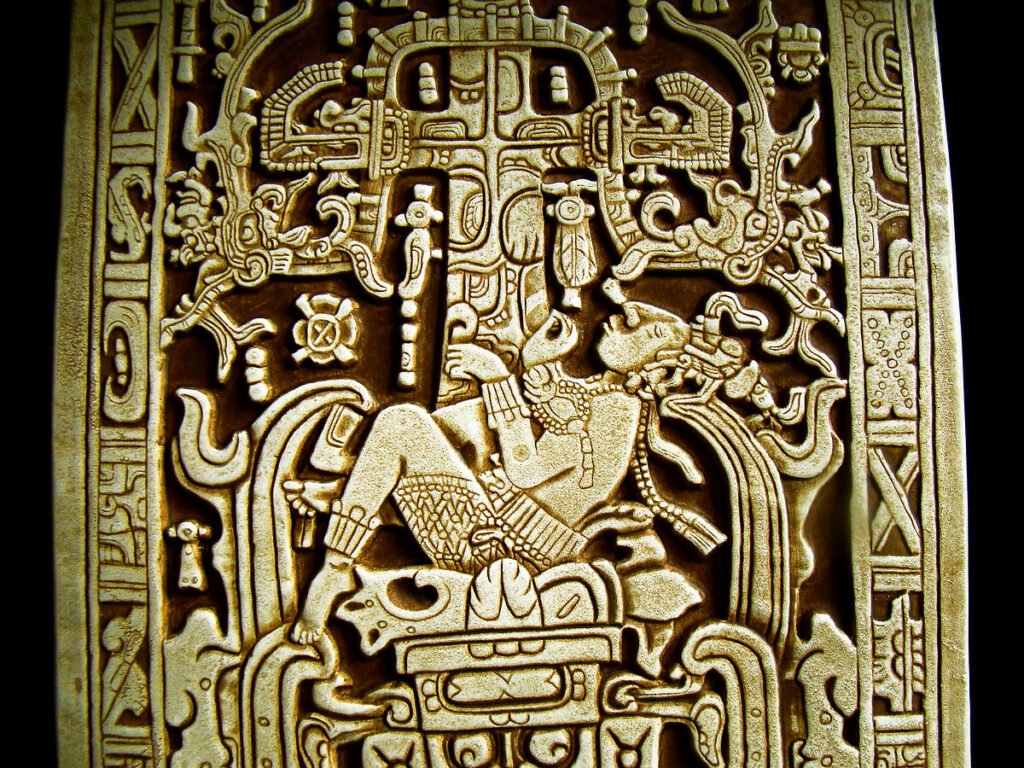In this in-depth study, we will explore the question of whether Kukulkan, the Mesopotamian deity, can be considered evil. There has been much debate and speculation surrounding this topic, with varying opinions among scholars and enthusiasts. Through a thorough analysis of historical texts, archaeological evidence, and religious beliefs, we aim to shed light on this controversial subject and provide a comprehensive understanding of Kukulkan’s nature.
Background of Kukulkan
Kukulkan, also known as Quetzalcoatl in Aztec mythology, is a deity worshipped by ancient Mesoamerican civilizations. Represented as a serpent with feathers, Kukulkan was revered as a god of wind, rain, and wisdom. The deity held great significance in the religious and cultural practices of the Mayans, Toltecs, and Aztecs, among others.
Kukulkan’s Attributes and Positive Symbolism
Kukulkan was associated with several positive attributes and symbols in Mesoamerican civilizations. The feathered serpent was considered a benevolent deity who brought fertility, abundance, and prosperity to the people. As the god of wind and rain, Kukulkan played a crucial role in ensuring successful harvests and the overall well-being of the community. Moreover, Kukulkan was seen as a wise and enlightened figure, guiding individuals towards knowledge and enlightenment.
Misinterpretations and Negative Depictions
Despite Kukulkan’s primarily positive symbolism, there have been instances where the deity has been misinterpreted or depicted negatively. This was particularly the case during the Spanish conquest of Mesoamerica, as the invading forces sought to undermine the existing indigenous belief systems. As a result, Kukulkan was sometimes equated with the Christian concept of the devil, leading to a distorted and negative portrayal of the deity in some historical accounts.
Analysis of Historical Texts
In order to gain further insight into Kukulkan’s nature, we must examine the relevant historical texts that mention the deity. These texts include ancient codices, inscriptions, and accounts written by early explorers and chroniclers.
Mayan Codices
The Mayan codices, such as the Dresden Codex and the Madrid Codex, provide valuable information about Kukulkan and his significance in Mayan society. These codices depict Kukulkan as a symbol of fertility, rain, and agricultural abundance. They also describe rituals and ceremonies dedicated to the deity, demonstrating the important role he played in religious practices.
Accounts of Explorers and Chroniclers
Accounts written by early European explorers and chroniclers also offer insights into Kukulkan’s nature. Friar Diego de Landa, a Spanish missionary in the Yucatan Peninsula during the 16th century, documented the beliefs and rituals of the Mayans. According to his writings, Kukulkan was worshipped by the Mayans as a benevolent deity who brought prosperity to their communities.
Analysis of Archaeological Evidence
In addition to historical texts, archaeological evidence provides crucial information about the religious practices and beliefs surrounding Kukulkan.
Temples Dedicated to Kukulkan
Several temples dedicated to Kukulkan, such as the famous El Castillo in Chichen Itza, have been discovered throughout Mesoamerica. These temples serve as a testament to the significance of the deity in the lives of ancient civilizations. The architectural design and alignment of these temples also reveal the advanced astronomical knowledge possessed by these civilizations.
Ritual Offerings and Artifacts
Archaeologists have unearthed various ritual offerings and artifacts associated with the worship of Kukulkan. These include ceramic vessels, incense burners, and stone carvings depicting the deity. These findings indicate the widespread devotion and reverence shown towards Kukulkan in Mesoamerican society.
Evaluating Kukulkan’s Actions and Morality
When evaluating whether Kukulkan can be considered evil, it is important to examine his actions and moral character as depicted in the historical texts and artifacts.
Positive Actions and Contributions
Throughout the historical accounts, Kukulkan is consistently portrayed as a beneficent deity, bringing positive changes to the lives of humans. His association with fertility, rain, and wisdom indicates his role in fostering the well-being and prosperity of the people.
Perceptions of Evil
It is crucial to distinguish between genuine negative actions associated with Kukulkan and the misinterpretations or misrepresentations of the deity by outside forces. As mentioned earlier, the negative depictions of Kukulkan during the Spanish conquest were a result of cultural bias and attempts to suppress indigenous beliefs.
Conclusion
Based on an analysis of historical texts, archaeological evidence, and religious beliefs, it is evident that Kukulkan is not an evil deity. The consistent portrayal of Kukulkan as a benevolent god of wind, rain, and wisdom underscores his positive attributes and contributions to Mesoamerican civilizations. Any representations of Kukulkan as evil are the result of misinterpretations or misrepresentations by external forces. The study of Kukulkan’s nature and symbolism serves as a reminder of the complexity and diversity of ancient religious beliefs, urging us to approach historical figures and deities with a nuanced perspective.
